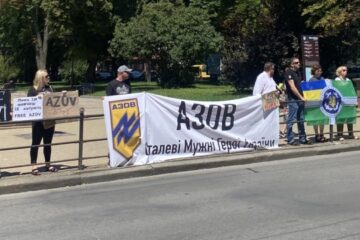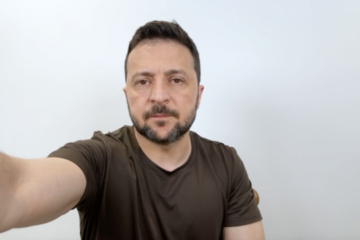
South Korea is one of the world’s leading defense tech countries. Ukrinform has explored how that country can be meaningfully helpful to Ukraine
Against the backdrop of Putin and Kim Jong-un’s controversial alliance (North Korea and Russia inked a strategic defense pact during Putin’s visit to Pyongyang on June 19, pledging to use all available means to provide immediate military assistance in the event the other is attacked), the South Korean leadership came out with an encouraging statement that they are considering lifting a ban on weapons supplies to Ukraine. Let’s hope that it won’t be long before words will be followed by concrete actions. After all, South Korea’s defense-industrial potential is powerful and diverse.
ON THE CAPACITIES AND POTENTIAL OF THE DEFENSE INDUSTRY IN SOUTH KOREA
Between 2017 and 2021, the South Korean defense industry was the fastest-growing among the 25 biggest arms exporters worldwide. According to the Stockholm International Peace Research Institute (SIPRI), that country was the 8th largest arms exporter in 2017-21 with a 2.8% share of the global total. The value of exports made last year by South Korea’s major arms firms totaled a record high of about $17.3 billion in 2022, up 140% from year earlier. Around $12.4 billion of this was accounted for by the tanks, howitzers, fighter airplanes and MLRS exported to Poland, plus smaller contracts from Egypt and the UAE.
One of the advantages relating to the arms export from South Korea is that it may involve technology transfers. Korean K2 and FA-50 tanks, for example, will be manufactured in Poland under the made-in-Poland brand, meaning the vehicles are manufactured under technology transfer from South Korea, but with Polish upgrades added.
Another example is the Turkish Altay tank. Korea helped develop the protective armor system, transferred a canon making technology, and also provided the power plant along with several other systems.
Military analysts are predicting that South Korea, if its defense industry does not lose it momentum for growth, will be able to achieve its ambitious goal to become the world’s fourth largest arms exporter by 2027, displacing Germany.
“Unlike states that reduced their armies and military equipment and ammunition production capacities at the end of the Cold War, South Korea has maintained a robust defense supply chain to meet the demand of its own armed forces and defend itself against North Korea. Eastern European countries rushed to re-equip and modernize their militaries after having sent Soviet-era weapons to Ukraine, making South Korea an attractive option,” writes The New York Times.
The bulk of South Korean-manufactured weapons are specifically designed to the US and NATO compatibility requirements, making them more appealing to potential customers. South Korea is currently the third largest arms supplier to NATO Allies, accounting for 4.9% of their total arms procurements (the US, which ranks the first, accounts for 65%, followed by France with 8.6%, – Ed.).
“South Korea’s military-industrial complex is, first of all, a focus on high-tech technologies. That country has capacities for manufacturing a wide portfolio of artillery ammunition products, including 155-mm rounds fired from Western-made howitzers”, Oleksandr Kovalenko, a military expert at the Information Resistance group, comments to Ukrinform.
“In South Korea, almost all technological solutions, if we talk, for example, about tanks or self-propelled guns, such as the K-9 Thunder, are the most advanced developments. These are the technologies such as fire control systems, electronics, fire stabilization systems, target tracking systems, and so on. South Korea is the manufacturer of high-end optics, electronics, UAVs, which, by the way, are better than Chinese ones.”
Simply put, South Korea is all about high technology, access to which would be very difficult for us to get.
“In that respect, South Korea can help Ukraine make a huge leap, let’s say so. We are talking about electronic components used in all of our weapons systems, ranging from tanks and armored fighting vehicles to missiles and related equipment. In Ukraine, technical and technological project thinking has always been at a very high level, even in Soviet-era times. The only resource our engineers have lacked for all these years is funding, as well as the technologies we need to move away from Soviet-style weapons systems and integrate Western ones.”
That’s in a nutshell. And now more specifically.
AMMUNITION, ARTILLERY, TANKS, AIR DEFENSE CAPABILITIES: WHY IT IS IMPORTANT FOR KYIV TO COOPERATE WITH SEOUL
South Korea could offer Ukraine armored vehicles and ammunition for use against the Russian enemy.
“The South Korean army still fields a regiment of T-80U tanks and related 125-mm projectiles. There is also a certain quantity of BMP-3 [infantry fighting vehicles] and BTR-80 [armored personnel carriers],” the expert says.
Compared to other types of equipment used by the South Korean army, it is not that much of a capability, and so it won’t be a pity to transfer [to Ukraine}, the expert says.
“There are also four dozen T-80U tanks stored in warehouses in South Korea, which add almost nothing to that country’s tank capability as the country fields more than 2,000 modern domestically-manufactured tanks such as K1, K1E1, K1A1, K1A2, and K2. The same is with two dozen BTR-80 APC’s vs nearly 2.500 newest armored personnel carriers of other brands the country’s military has in operational service.”
Oleksandr Kovalenko notes that South Korea also operates “quite a significant artillery capability” that particularly includes 1.300 self-propelled 155-mm guns K9 Thunder and more than 1,000 K55/K55A1 self-propelled howitzers, which are the Korean upgrade to the American M109 technology.
The analyst said he knows that South Korea has in stock a fleet of 2,300 self-propelled 155-mm howitzers, with the “established production of related rounds of ammunition.”
“You can list for a long time the various weapons products manufactured by South Korea’s defense-industrial complex which are operational with the country’s military and could be of interest to Ukraine. Hopefully, the coalition of friends of Ukraine will soon be replenished with another supplier of high-tech weapons, which Ukraine so desperately needs to defeat the countless hordes of invaders,” Oleksandr Kovalenko emphasizes.
Military expert Ivan Stupak, in a comment to Ukrinform, also mentioned a quantity of T-80 tanks and related projectiles the South Korean military is keeping in stock. But, in his opinion, it would be more useful for Ukraine to negotiate with Seoul on long-term supplies of various sorts of drones.
“What is not in sight is a wide variety of unmanned aerial vehicles of various sizes and purposes, including self-destroying kamikaze drones. Ukraine needs a long-term supply of such drones, not just a one-time shipment, but, for example, 100-200 drones per month,” Mr. Stupak says.
In addition, South Korea could provide Ukraine with anti-aircraft missiles, for which President Zelensky has recently requested his South Korea counterpart Yoon Seok Yeol among other things
“Air defense weapons are for purely defensive purposes. A heavenly shield is a must have for Ukrainian recovery and restoration. We do hope that Korea will support us in this matter. Furthermore, there is need for an early warning system for Russian airstrikes, and South Korea could help us with this,” the President said.
Seoul has a pretty wide selection of products that could help Ukraine bolster is air defense capability, according to Defense Express, a military news and consulting company. These particularly include:
KP-SAM Chiron — a shoulder-launched infrared homing surface-to-air missile capable of a 7 km firing range;
Video
The M163 VADS ,Vulcan Air Defense System, is a self-propelled/towed anti-aircraft gun.The M163 VADS is armed with the M168 gun, a variant of the standard cannon used in most U.S. combat aircrafts. The gun is mounted on a modified M113A1 vehicle designed to work in tandem with the M48 Chaparral missile system. The gun fires at a rate of 3,000 rounds per minute and can also fire in short bursts of 10, 30, 60, or 100 rounds.
“A very good candidate for the role of “a hunter for Shaheds”. There are quite a few such systems in service with the South Korean armed forces – about 210 (150 self-propelled and 60 towed), which are being phased out of operation”.
Video
K30 Biho (Flying Tiger) Self-Propelled Anti-Aircraft Gun is a primary SPAAG of the Republic of Korea Army. The product is aimed at the South Korean Army requirement, as well as export customers. It’s armed with twin 30mm, 600 rpm autocannons, each provided with 300 rounds of ready-use ammunition, and 4 Chiron (Shingung) MANPADS. It is equipped with a search radar and Electro-Optical Targeting System (EOTS) for detecting and targeting, respectively. Biho’s X-Band search radar has range of 20km and its EOTS has tracking range of 7km. Its 30mm autocannons and MANPADS have effective engagement ranges of 3km and 5km, respectively. As of 2022, the Republic of Korea military had 167 such systems in operational service;
Video
The Bofors L70 40 mm auto-cannon has a cyclic rate of 320 rounds per minute and an effective range of 4,000 meters against both airborne and ground targets. An electro-hydraulic drive is used for guidance, but the gun can be guided manually where appropriate. The L-70 guns are already in service with Ukraine’s Armed Forces, showing an extremely high effectiveness against Iranian-produced drones. There are approximately eight dozen such systems in South Korea.
“Human interference is only needed to load the weapon. Now there is talk about fitting out the weapon with current-generation thermal imaging devices and optical sighting stations to add a day-and-night capability. A highly capable 40mm gun, it takes only one shot to hit a target like Shahed drone,” explains Oleh Katkov, editor-in-chief at Defense Express.
Video
The K-808 KW2 (AAGW) — an anti-aircraft gun system armed with a twin 30 mm gun mount. As seen from its specifications, the K-808 is, in fact, a simplified, lower-weight version of the K30 Biho, allowing it to be integrated on an 8×8 platform selected by customer.
Video
The KM-SAM Cheongung medium-range surface-to-air missile system and its new PIP missile interceptor, a “hit-to-kill” weapon that relies on the 400-kilogram missile colliding with its target, rather than detonating a warhead in its vicinity. A proximity-fused anti-aircraft variant is already in service. The KM-SAM began to enter service with the South Korean military army only in 2017. A Cheongung battery can hit targets as high as 15,240 to 18,300 meters and defend a 40.2 km radius. Each unit includes a truck-mounted multi-function Passive Electronically Scanned Array radar that can track, and identify and generate targeting data for targets within 96.5 miles. The blocky three-dimensional can track at least 40 contacts at once. The South Korean army has approximately 72 such systems in operational use.
Video
Add to that, Seoul has up to 1,000 units of MANPADS already well known to the Ukrainian military, including Stinger, Javelin, Mistral, and “Igla”.
As for artillery systems, South Korea’s most renowned weapon in this category is the K9 Thunder self-propelled 155mm howitzer. It is capable of firing ranges of 30 km with a standard high-explosive projectile and 40 km with a rocket-boosted projectile, and can fire six rounds per minute. It takes 20 seconds to prepare to fire and 60 seconds to leave once firing is complete. The K9 Thunder is in service with Finland, India, Estonia, Norway, and Australia. Egypt and Poland also signed procurement contracts for the K9’s in 2022. As of 2023, it is one of the most commercially successful artillery system products in the world.
Video
The Chunmoo can destroy field fortifications, bridges, airstrips, and concentrations of troops and equipment. A full salvo from one single launcher covers an area the size of three football fields.
Video
Myroslav Liskovych, Kyiv
Source: South Korea looking at Ukraine as Moscow, Pyongyang sign strategic defense alliance


